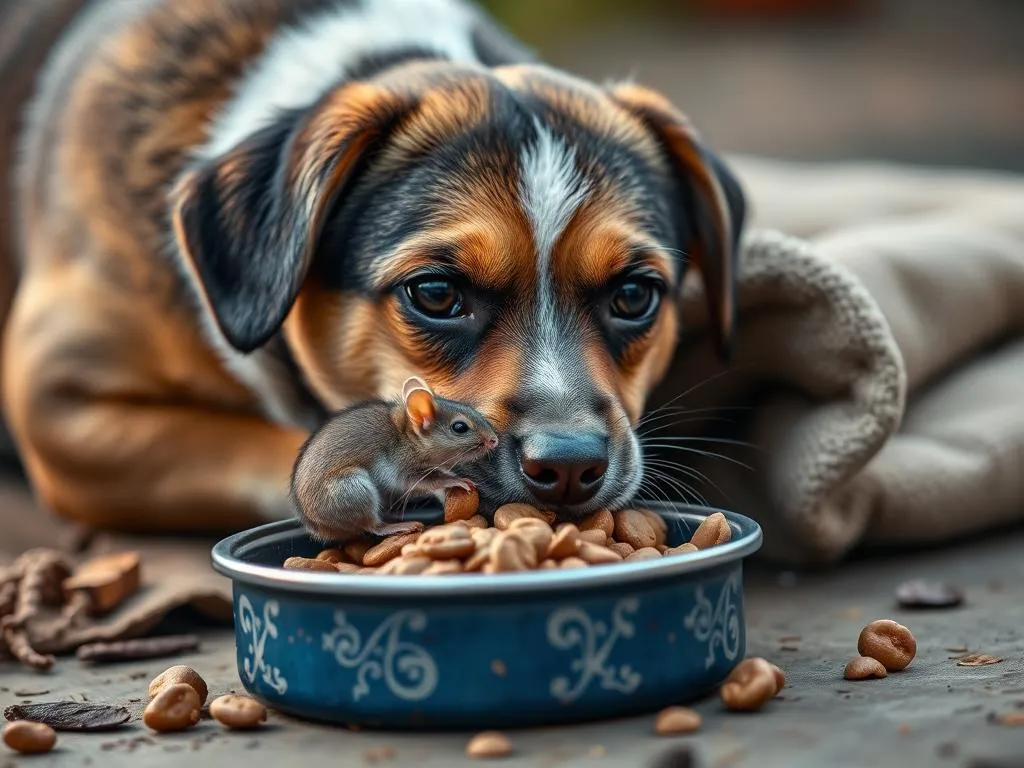
Mice invading dog food is a common problem for pet owners, and it can lead to serious health risks for both pets and households. The presence of mice not only poses contamination threats but can also cause emotional stress for pet owners. In this article, we’ll explore effective strategies on how to keep mice away from dog food, ensuring your furry friends stay safe and healthy.
Understanding the Problem
Why Mice Are Attracted to Dog Food
Mice are primarily drawn to dog food for its nutritional value and enticing scent. Dog food often contains high levels of protein and fats, making it a lucrative food source for these small rodents. Additionally, many pet owners store dog food in ways that make it easily accessible, such as in open bags or in low cabinets, inviting mice into the pantry.
Risks Associated with Mice in Dog Food
Mice can carry various diseases that can be transmitted to dogs, such as leptospirosis and hantavirus. Contamination of dog food can lead to gastrointestinal issues or more severe health problems in pets. Beyond health concerns, mice can cause property damage by chewing through food bags, wiring, and insulation. Furthermore, the presence of mice can create psychological and emotional stress for pet owners, who may worry about the health of their pets and the cleanliness of their home.
Preventative Measures
Proper Storage Solutions
Airtight Containers
One of the most effective ways to keep mice away from dog food is to use airtight containers for storage. These containers not only prevent mice from accessing the food but also keep it fresh for longer.
When choosing containers, consider materials such as:
– Plastic: Lightweight and often less expensive, but ensure it is sturdy and chew-proof.
– Metal: More durable and resistant to chewing, making it an excellent choice for long-term storage.
Elevated Storage
Another critical strategy is to keep dog food off the ground. Mice are less likely to explore elevated areas, so consider using shelves or racks for storage. This keeps food out of reach and minimizes the chances of attracting unwanted pests.
Cleanliness and Maintenance
Regular Cleaning Routines
Maintaining a clean environment is essential in preventing mice from invading dog food. Spills should be cleaned immediately, and feeding areas should be wiped down regularly to remove any crumbs or residue. Establish a routine that includes:
– Daily checks of feeding areas.
– Weekly deep cleans of storage spaces.
Proper Disposal of Waste
Dispose of expired or uneaten food promptly, and ensure that feeding areas are tidy after meals. Avoid leaving dog food out for extended periods, as this can attract mice. Keeping food and waste well-managed will discourage mice from making your home their habitat.
Environmental Adjustments
Assessing and Sealing Entry Points
Common Entry Points for Mice
Mice can squeeze through remarkably small openings, so it’s crucial to assess your home for potential entry points. Common areas to check include gaps around:
– Walls
– Doors
– Windows
– Pipes
Effective Sealing Techniques
Once you’ve identified potential entry points, seal them effectively to prevent mice from entering. Recommended materials for sealing include:
– Steel wool: An excellent barrier against chewing.
– Caulk: Ideal for sealing small cracks.
– Wood or metal boards: Use for larger gaps.
Consider whether you want to tackle this as a DIY project or hire a professional service, especially if the problem persists.
Outdoor Considerations
Landscaping and Yard Maintenance
Your outdoor space can also attract mice, so it’s essential to maintain it properly. Here are a few tips to keep your yard less inviting:
– Keep grass trimmed short to eliminate hiding spots.
– Regularly remove debris, such as leaves and branches, that can serve as nesting materials.
Food and Waste Management
If you feed your dog outdoors, ensure that pet food is stored securely and that any leftovers are cleaned up promptly. Additionally, manage trash properly by using sealed bins to prevent attracting mice.
Deterrents and Repellents
Natural Repellents
Essential Oils and Natural Scents
Many essential oils can serve as effective natural repellents against mice. Some of the most commonly used oils include:
– Peppermint oil: Known for its strong scent, which deters mice.
– Eucalyptus oil: Another effective option that can be used similarly.
Dilute these oils with water and spray them in areas where you store dog food or where you’ve noticed mouse activity.
Home Remedies
DIY mixtures can also be helpful. A simple combination of vinegar and water sprayed around storage areas can deter mice due to the strong scent.
Commercial Repellents
Types of Repellents Available
The market offers a variety of commercial repellents, including:
– Sprays: Easy to apply and often contain natural ingredients.
– Granules: Can be spread around areas to create a barrier.
– Electronic repellents: Use sound waves to deter rodents without harming pets.
Safety Considerations for Pets
When selecting a commercial repellent, it’s crucial to ensure that it is pet-safe. Always read labels carefully and opt for products specifically designed to be non-toxic to pets.
Monitoring and Maintenance
Regular Inspections
Routine checks are vital for preventing mice from accessing dog food. Inspect storage areas and feeding spots for signs of mice, such as droppings or chewed packaging.
When to Seek Professional Help
If you notice persistent signs of mice or an infestation, it may be time to seek professional pest control services. Look for companies that offer pet-friendly solutions and have a good reputation in your area.
Conclusion
Keeping dog food safe from mice is crucial for the health of your pets and the cleanliness of your home. By implementing the strategies discussed, you can create a safer environment for your furry companions. Focus on proper storage, cleanliness, environmental adjustments, and effective deterrents to ensure that mice stay away from dog food. Remember, a proactive approach today can prevent bigger problems tomorrow, creating a healthier home for both you and your pets.









